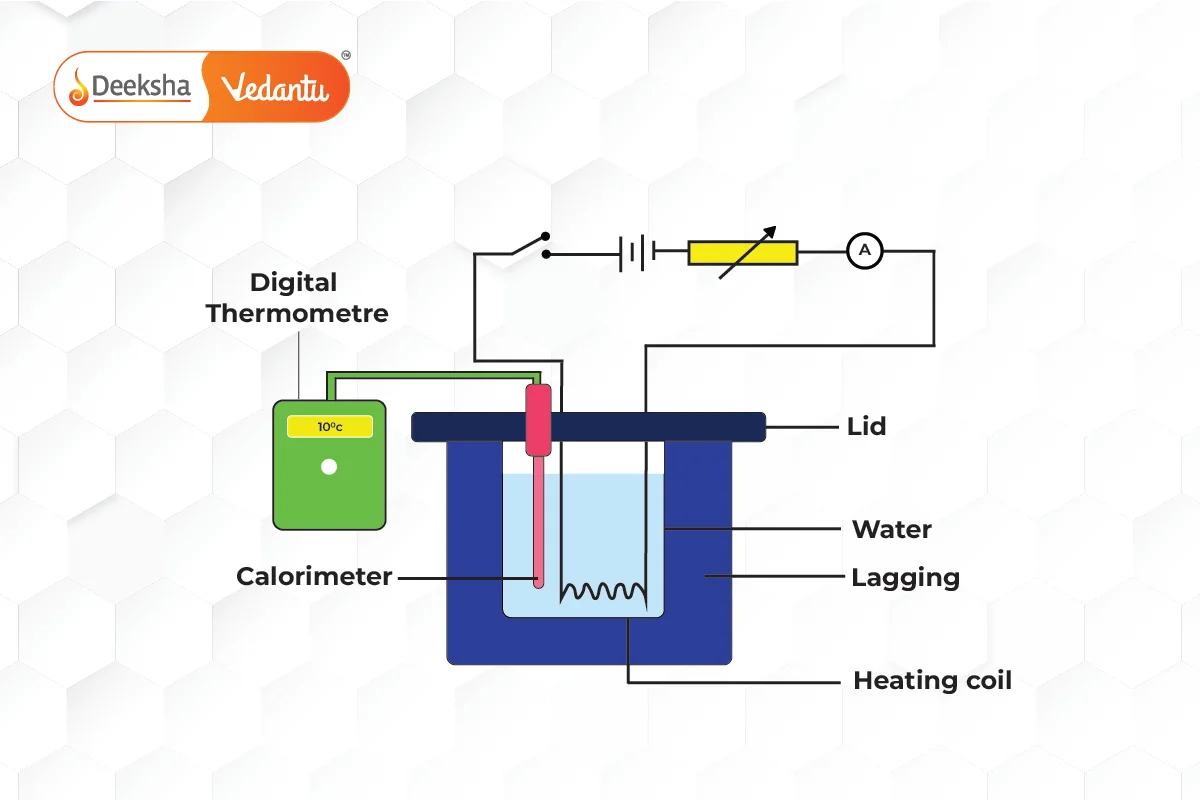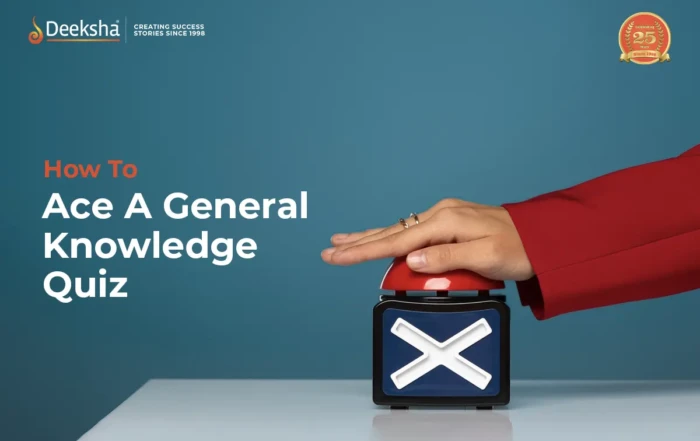Introduction to the Heating Effect of Electric Current
Whenever electric current flows through a conductor, the conductor heats up due to the collisions between the free-flowing electrons and the atoms of the conductor. This phenomenon is known as the heating effect of electric current. The electrical energy supplied by the current is converted into heat energy, which can be observed in everyday appliances like electric irons, heaters, and filament bulbs.
This effect plays a significant role in both useful applications (like electric heaters) and potential hazards (like overheating of electrical circuits). Understanding the heating effect of electric current helps in designing devices and circuits that efficiently convert electrical energy into heat or prevent overheating in undesired situations.
Joule’s Law of Heating
The heat produced in a conductor due to the flow of electric current is governed by Joule’s Law of Heating, which states that the amount of heat produced (H) in a conductor is directly proportional to:
- The square of the current (
) passing through the conductor.
- The resistance (
) of the conductor.
- The time (
) for which the current flows.
Mathematically, Joule’s Law is expressed as:
Where:
= Heat produced (in joules,
).
= Current flowing through the conductor (in amperes,
).
= Resistance of the conductor (in ohms,
).
= Time for which the current flows (in seconds,
).
This equation shows that the heat produced is proportional to the square of the current, meaning even a small increase in current results in a large increase in heat.

Derivation of the Heat Formula
The heat produced by an electric current can also be derived using the formula for electric power:
Where:
= Power (in watts,
).
= Voltage (in volts,
).
= Current (in amperes,
).
The energy dissipated in the form of heat in a time is:
By applying Ohm’s Law ():
Thus, we obtain the formula for the heat generated:
Applications of the Heating Effect of Electric Current
The heating effect of electric current is widely used in various appliances and devices, where electrical energy is deliberately converted into heat energy. Some common applications include:
Electric Heaters: Electric heaters such as room heaters and water heaters use high-resistance wires (usually made of nichrome) to convert electrical energy into heat. When current flows through the high-resistance heating element, it generates heat, which is used to warm the surroundings or heat water.
Electric Iron: Electric irons use the heating effect to iron clothes. A high-resistance coil is embedded inside the iron, which heats up when current flows through it. The heat generated by the coil is then used to press clothes.
Electric Bulbs (Incandescent Lamps): Incandescent light bulbs work on the principle of the heating effect. When current flows through the thin tungsten filament, it heats up to a very high temperature, causing it to emit light.
Electric Fuses: Electric fuses protect electrical circuits from excessive current. When too much current flows through a circuit, the fuse wire (made of a material with low melting point) heats up and melts, breaking the circuit and preventing damage to electrical devices.
Electrical Energy and Power
The heating effect of electric current also helps us understand how electrical energy is consumed by devices and converted into other forms of energy. The power () consumed by a device is related to the electrical energy it uses and the rate at which it converts electrical energy into heat.
The electrical power consumed by a resistor is given by:
Or alternatively, using Ohm’s Law:
Where:
= Power (in watts,
).
= Voltage (in volts,
).
= Current (in amperes,
).
= Resistance (in ohms,
).
The total electrical energy consumed over time is given by:
Where:
= Energy Consumed (in joules,
).
= Power (in watts,
).
= Time (in seconds,
).
For practical purposes, electrical energy is measured in kilowatt-hours (), which is the unit of energy consumption used by electricity companies.
Factors Affecting the Heating Effect
Several factors influence the amount of heat produced when current flows through a conductor:
Current (): The heat produced is directly proportional to the square of the current (
). A small increase in current results in a large increase in heat production.
Resistance (): The heat produced is directly proportional to the resistance of the conductor. A material with higher resistance generates more heat when the same current flows through it.
Time (): The heat produced is directly proportional to the time for which the current flows. The longer the current flows through a conductor, the more heat is produced.
Practical Considerations and Safety Measures
While the heating effect of electric current is useful in many applications, it can also lead to overheating in electrical circuits, posing safety hazards. Here are some safety measures to avoid the harmful effects of excessive heating:
Use of Fuses and Circuit Breakers
- Fuses and circuit breakers are safety devices that automatically break the circuit if the current exceeds a safe limit. This prevents excessive heating, which could cause fires or damage to appliances.
Proper Insulation
- Conductors and wires should be properly insulated to prevent overheating and electrical shocks. Insulation prevents the loss of energy as heat and ensures that electrical energy is used efficiently.
Proper Ventilation
- Electrical appliances that generate heat, such as computers and televisions, should be placed in well-ventilated areas to avoid the accumulation of heat. Poor ventilation can cause the devices to overheat and malfunction.
Appropriate Wiring
- Electrical wiring in homes and buildings should be of the appropriate thickness and material. Wires with insufficient thickness can overheat and cause electrical fires.
Real-Life Applications of the Heating Effect
Room Heaters and Electric Kettles: Room heaters and electric kettles use nichrome wires, which have high resistance. When current passes through these wires, they generate heat, which is used to warm the room or boil water.
Filament Bulbs: Filament bulbs rely on the heating effect of current flowing through the tungsten filament. The filament heats up to a high temperature and emits light as a result.
Cooking Appliances: Devices like electric stoves and toasters utilize the heating effect of current. These appliances have heating elements that become hot when current flows through them, converting electrical energy into heat for cooking food.
Key Practice Questions
Q1: A current of 3 A flows through a resistor of for 2 minutes. Calculate the heat produced.
- Answer:
The heat produced is
Q2: An electric heater uses a current of 10 A and has a resistance of . How much heat is generated in 5 minutes?
- Answer:
The heat produced is.
Q3: A 100 W bulb operates on a 220 V supply. Calculate the current flowing through the bulb and the resistance of its filament.
- Answer:
- First, calculate the current using
:
- Next, calculate the resistance using
- The current is
, and the resistance of the filament is
- First, calculate the current using
FAQs
A fuse works by using a thin wire with a low melting point. When excessive current flows through the fuse, the wire heats up due to the heating effect and melts, breaking the circuit and preventing damage to appliances.
Applications of the heating effect include electric heaters, electric irons, toasters, fuses, and filament bulbs. These devices convert electrical energy into heat energy for useful purposes.
High-resistance materials, like nichrome, are used in electric heaters because they generate more heat when current flows through them. This is because the heat produced is directly proportional to the resistance of the material.
The heat produced in a conductor is proportional to the square of the current flowing through it, the resistance of the conductor, and the time for which the current flows. It is given by the formula .
The heating effect of electric current refers to the phenomenon where heat is generated when an electric current flows through a conductor. This occurs due to collisions between electrons and atoms in the conductor.
Related Topics
- Magnetic Field Due To A Current – Carrying Conductor
- P-N Junction
- Dispersion Of White Light By A Glass Prism
- Magnetic Effects Of Electric Current
- Bernoullis Principle
- Concave Mirrors and Convex Mirrors
- Acceleration
- Refraction Of Light Through A Prism
- Electricity
- Refraction Of Light
- Velocity
- Work, Energy and Power
- Magnetic Field And Field Lines
- Fleming’s Left-Hand Rule and Right-Hand Rule
- Circuit Diagram












Get Social